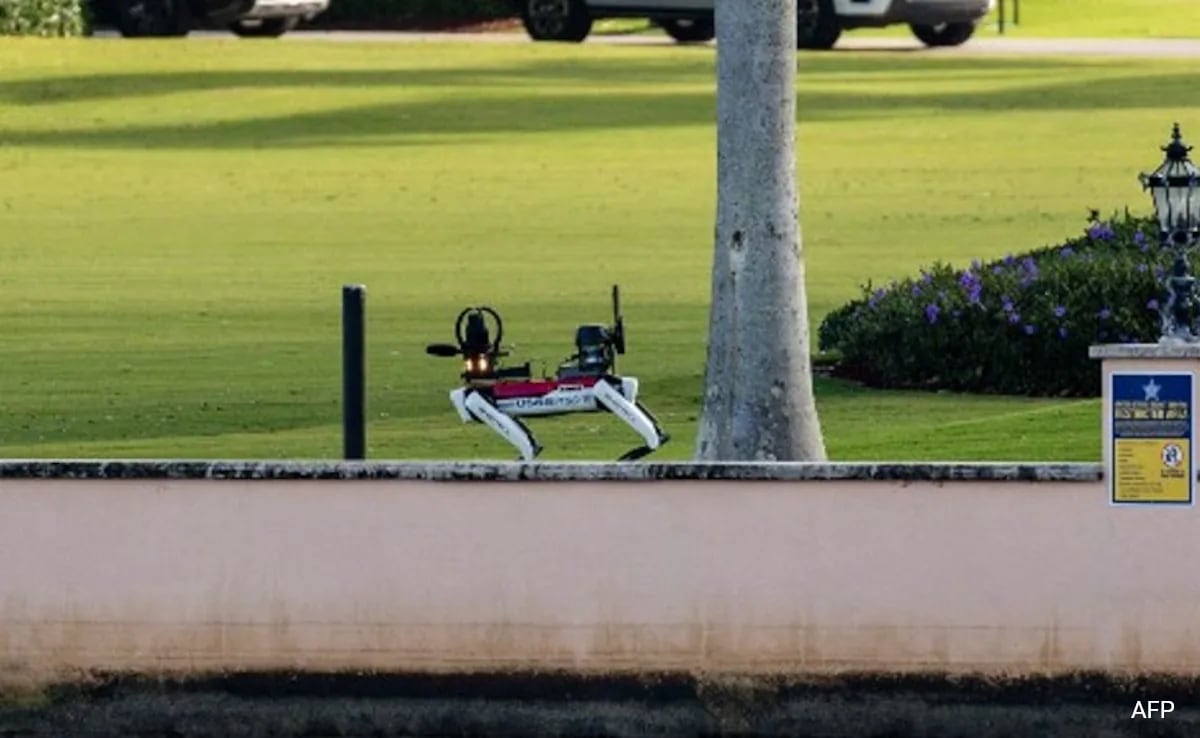Days after his win in the US Presidential elections, Donald Trump’s Mar-a-Lago estate security has been upgraded with a robotic dog. The mechanical canine was spotted patrolling the estate in Palm Beach, Florida, early on November 8, adding a futuristic layer to the estate’s security measures.
According to The New York Post, in videos, the robot dog, manufactured by Boston Dynamics, is seen moving along the grassy grounds, walking amid the palm trees surrounding the property. A warning label on its side reads, “DO NOT PET.”
The United States Secret Service confirmed the deployment of the robotic dog as part of its ongoing efforts to safeguard the President-elect. A spokesperson for the agency told New York Post, “Safeguarding the President-elect is a top priority. While we cannot get into the specific capabilities, the robotic dogs are equipped with surveillance technology, and an array of advanced sensors that support our protective operations.”
Trump, who survived two assassination attempts during his campaign, has been working on assembling his incoming administration at Mar-a-Lago following his victory over Kamala Harris.
Robotic dogs have become increasingly popular among public safety agencies across the US. They provide a way to keep law enforcement officers and first responders out of harm’s way in dangerous situations. The New York Police Department (NYPD) unveiled a robotic K-9 unit dubbed “Digidogs,” announced by Mayor Eric Adams last year. Originally leased from Boston Dynamics, the robots were met with public criticism, with social media users drawing comparisons to something straight out of the dystopian series Black Mirror.
Beyond law enforcement, these robots have been deployed for more critical, life-saving roles. In the aftermath of a parking garage collapse in Lower Manhattan last year, one such robot dog was sent into the wreckage to search for survivors and assess the destruction.
The military has also found use for these advanced machines. Earlier this year, Ukraine’s military deployed 30 robot dogs, each costing around $9,000, against Russian forces. The “metal pooches” served as reconnaissance units that could swiftly deliver supplies, reducing the risk to human soldiers on the front lines.








